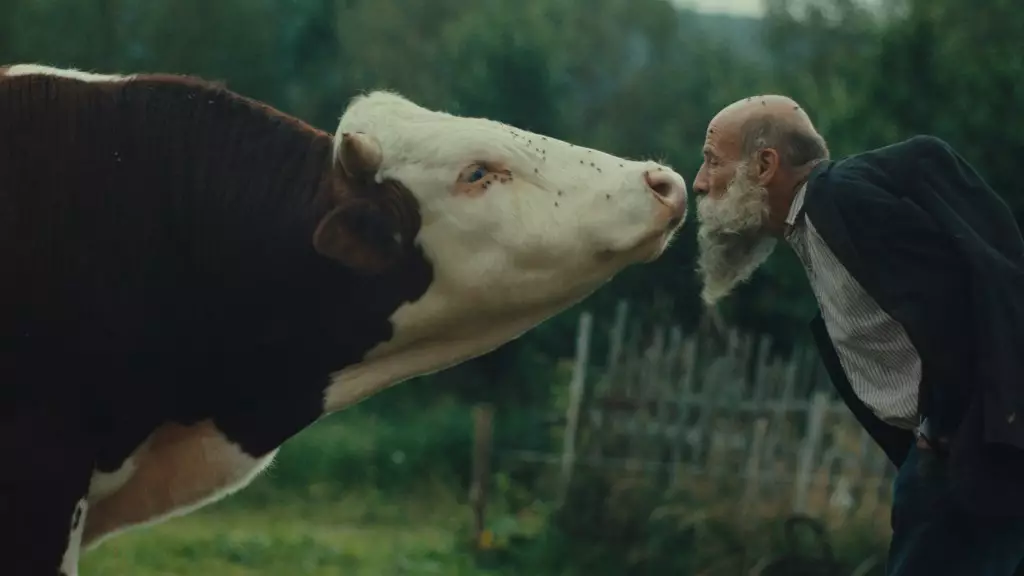In an era saturated with curated images and superficial storytelling, it is increasingly rare to encounter a film that dares to peel back societal facades and showcase the raw, unvarnished essence of human existence. The recent award-winning documentary at the 59th Karlovy Vary International Film Festival exemplifies this rare bravery. While its surface narrative may seem humble—a portrait of two aging brothers living in isolation—it fundamentally challenges viewers to reconsider the assumptions surrounding poverty, marginality, and authenticity. The film’s power lies not just in its subject matter but in its audacious refusal to simplify human lives into digestible soundbites.
This documentary, echoing the most profound insights of masters like the Maysles brothers and Dušan Hanák, ventures into uncharted emotional territories. It pushes us to confront the uncomfortable idea that often, society’s judgments about appearance, intelligence, and worth are superficial. Instead, it advocates for a deeper understanding that genuine richness comes from a life lived with conviction and integrity—regardless of material circumstances. The film’s genius is in its unapologetic portrayal of life at the fringes, revealing that even in apparent disorder lies a fundamental beauty and resilience.
A Nuanced Reflection of a Self-Sufficient World
Set in the tranquil but rugged Bohemian Forest region, the documentary introduces us to František and Ondřej Klišík—brothers whose appearance and mannerisms immediately evoke stereotypes of rural poverty. Yet, as the film unfolds, it becomes apparent that these men are not relics of a bygone era but rather staunch holdouts of a worldview that many have turned away from. Their lives are punctuated by moments of poetic reflection, philosophical musings, and a surprising depth of knowledge, all of which counteract the superficial labels often assigned to such marginalized communities.
The brothers’ existence is an ode to autodidacticism and resistance—a living testament to the value of self-education and rebellious independence. Their storytelling, narrated by a philosophically inclined bull named Nandy, elevates their rustic lifestyle to a spiritual quest, challenging viewers to reinterpret notions of progress and success. It’s a stark contrast to the glossy veneer of modern society, and in that contrast lies the film’s stark beauty. It questions whether the chaos we associate with unstructured lives masks a profound understanding of the world and ourselves.
Historical Context and the Power of Understated Truth
Drawing parallels to iconic documentaries like Hanák’s “Pictures of the Old World,” this film subtly embeds its narrative within a broader political and cultural context. The Klišík brothers, having participated in the Velvet Revolution, embody a form of defiant authenticity that defies the propaganda of their time. Their clandestine involvement in revolutionary activities adds a layer of political defiance to their personal narrative, suggesting that even the most isolated lives are intertwined with the tides of history.
However, the film chooses restraint over exposition. It reveals fragments of their past—mischievous acts, revolutionary pamphlets, and moments of introspection—without overwhelming viewers with backstory. This approach demands patience and an active engagement, but it also risks leaving audiences frustrated for not gaining a full understanding. Nonetheless, it succeeds in emphasizing that truth is often found in the lived experience itself, rather than in a neatly packaged history lesson.
Balance of Eccentricity and Poignancy
Throughout the documentary, moments of levity punctuate the narrative—the brothers wandering naked through the countryside, whimsically protesting moles, or sharing candid moments that border on the absurd. These scenes, filled with humor and authenticity, create an intimate connection, exposing the audience to a life unfiltered by social norms. Yet, beneath this eccentric exterior lies a deeper commentary on human endurance and the willingness to live authentically, despite societal rejection.
However, there is an undercurrent of fatigue that emerges—a sense that the film sometimes overstays its welcome in its portrayal of these men’s idiosyncrasies. The repetitive bickering, the slow-paced narration, and the focus on mundane details can become tiresome, risking the risk of turning eccentricity into spectacle rather than insight. The documentary’s refusal to provide exhaustive explanations leaves gaps that could serve as opportunities for deeper reflection on the socio-economic forces shaping such lives.
The Unspoken Potential of Life’s Simplicities
Ultimately, what makes this film compelling is its unyielding honesty. It refuses to romanticize poverty or depict these brothers as tragic figures; instead, it presents them as authentic human beings who have carved out a version of life that works for them. The palpable affection between the brothers, their playful defiance, and their philosophical outlook challenge viewers to reconsider what constitutes a meaningful existence.
In its own quiet way, this documentary is a testament to the resilience of human spirit, showing that sometimes, the simplest lives teach the most profound lessons. It beckons us to look beyond appearances and acknowledge that authenticity—no matter how unconventional—is a form of strength. While the film leaves some questions unanswered, it invites us to embrace the ambiguity and find our own truths in the untamed narratives of those living on society’s margins.
